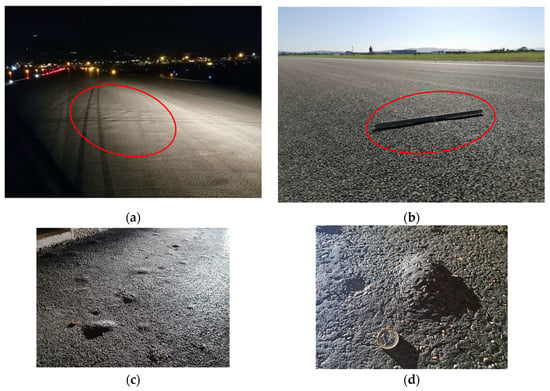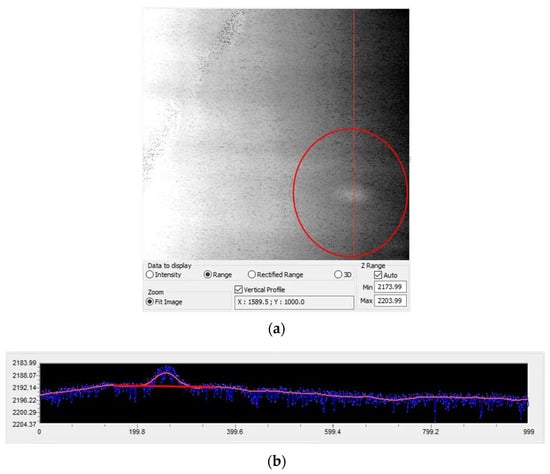You're using an outdated browser. Please upgrade to a modern browser for the best experience.
Please note this is a comparison between Version 1 by Laura Moretti and Version 2 by Sirius Huang.
No theoretical model effectively explains the blistering process, which provokes functional distress in asphalt pavements worldwide. Over the years, it has been possible to observe blistering on many asphalt pavements, collect information related to the specific contexts of its occurrence, and formulate hypotheses on the potential causes.
- blistering
- buckling
- air voids
- permeability
- solar radiation
- bulges
1. Introduction
The design and construction of road and airport pavements aim to meet structural and functional requirements [1] that ensure regular and safe service. Functional properties of a horizontal surface to be ridden require smoothness and adherence to allow for safe and comfortable vehicle mobility [2]. Several distresses (e.g., cracks, potholes, rutting, and raveling) have been recognized and investigated in the literature to counteract their appearance and manage their effects [3]. However, blistering negatively affects surface flatness and integrity [4], but it is still not fully understood [5]. It is frequent in hot climates and often appears upon exposure to rain, fog, or other water sources [6]. It is an irreversible (or partially reversible) process that consists of nonlinear blister growth dynamics that can start at the interface between two layers or within the upper layer and can have different consequences [7]. Indeed, blisters can reach a stable state, break, or lead to delamination, depending on the mechanical and adhesion properties of the materials [8][9][8,9]. The uplifts have a circular shape with extremely variable dimensions: their diameter can reach 1 m, and their maximum elevation is usually a few centimeters over the ideal and initial flat surface [10]. It often affects asphalt mixtures on asphalt roof shingles [11], pipelines [12], pipes for drinking water supply [13], Portland cement concrete bridge decks [14][15][14,15], steel deck bridge pavements [16], dams [7], pumped-storage power stations [7], runways [17], sidewalks [18], carriageways [5], waterproofing membranes [19], and asphalt-covered concrete structures [20] in south- and west-facing areas. According to the literature, the main physical mechanisms that drive blistering are temperature fluctuation [21], bottom-up pressure [22], loss of adhesion [23], peeling fracture [20], thermal expansion, and buckling [24]. Moreover, the blister failure mode has a direct relationship with the air void content, air and water permeability [25], stripping [23], the tensile/bond strength of the asphalt mixture [26][27][26,27], and the surface roughness [28]. The properties of the lower layer play a pivotal role: asphalt over granular or permeable layers does not suffer from blisters [29]. Moreover, a rough lower surface (e.g., milled binder) ensures a higher bonding performance between the tack coat and the upper layer [30]. Additionally, subsurface void detection with ground penetrating radar allowed for the identification of cavities filled with water [31].
The complex mechanisms damage the surface of pavement, requiring maintenance and rehabilitation work. Indeed, neglecting the problem causes further distress with the onset of cracks, the infiltration of water, and removal of the bulge surface [32]. Cracks, potholes, raveling, surface wearing, and stripping affect pavement use when a low tolerance for out-of-flatness has to be applied (e.g., for airport runways where blistering can cause foreign object debris) [33]. Figure 1a,b shows night and day images of two runway pavements where blisters are in the red circles. Figure 1c,d shows the effects on sidewalks whose surface has numerous bulges; both images present a 1 euro coin (23.2 mm diameter).

Figure 1.
Blisters. (
a
) On runway pavement; (
b
) on runway pavement; (
c
) on sidewalks; (
d
) on sidewalks.
Moradi et al. [34] proposed a machine vision system to detect and grade the blistering defects of coatings according to [35]. Although there is a lack of standardized assessment methods to classify the severity and impact of pavement blisters, bulges higher than 3 mm prevent aircraft movements [36], and vertical differences in elevation higher than 1.25 cm are hazards for sidewalks and crosswalks [37]. Figure 2b shows the surface laser profile of the red alignment in Figure 2a and highlights the blister profile. The red circle in Figure 2a highlights the position of a blister.

Figure 2.
Blister. (
a
) Surface image; (
b
) surface laser profile.
2. What Are the Potential Causes of Blistering?
Over the years, it has been possible to observe blistering on many asphalt pavements, collect information related to the specific contexts of its occurrence, and formulate hypotheses on the potential causes. Blisters (or bulges) occur during daytime hours and have regular circular shapes whose diameters range from a few centimeters to more than 1 m. Sasaki et al. [38][40] identified two blistering processes: primary blistering is observed just after the completion of the pavement and is usually caused by water trapped within the layers during laying [39][41]; secondary blistering occurs in hot periods following the end of the work and has been attributed to chemical, physical, and organic reactions within the asphalt surface, buckling effects, or moisture intrusion into upper layers. Whatever period they appear in, the necessary conditions for uplift occurring are high surface temperatures and an imperfect bond between the upper and lower layers (e.g., wearing and binder courses, or overlay and existing wearing layer) [40][42] or low tensile strength of the asphalt mixture [41][43].
2.1. Chemical Reactions within the Asphalt Surface
In 1984, blistering appeared on Runway 14–32 of the Marine Corps Air Station in Beaufort, South Carolina. In summer, secondary blisters involving a thin asphalt overlay two years after its construction occurred during the cold period. The bubbles were observed in limited areas of the pavement, and chemical reactions between the pavement materials and/or the biological activity of organisms present have been investigated as the causes of blistering [42][44]. A complex bacterial composition was found in blisters on asphalt concrete linings in the Czech Republic [43][45]. Both chemical reactions and biological activities can lead to the production of gases that are responsible for the observed distress. Hironaka and Holland [42][44] came to rule out such a possibility. Firstly, they noticed the fast occurrence of high surface temperatures of the surface due to solar radiation. Daytime blister behavior occurs at the upper layer of asphalt pavement because the maximum daily temperature range occurs within the topmost 5 cm of the surface. This condition suggests a close and reasonable correlation with the climatic conditions to which the pavement was exposed. The bubbles raised when the temperature increased, receded when the temperature decreased, and deflated when punctured. Therefore, the blisters contained pressured gases and were not caused by buckling effects. Due to the deep (more than 3 m) groundwater table and the sandy subgrade, steam from the groundwater or soil could not cause gas pressure beneath the wearing layer. Four gas samples from the blisters were analyzed to investigate their composition. However, the chemical approach was incorrect:
-
According to [42][44], it is unlikely that chemical activity was responsible for the gas production since the materials used in the production process were chemically stable. The inversion of a chemical reaction requires a certain amount of energy and a catalyst, which were unavailable within the pavement considering the daily cyclicity. Finally, the amount of gas generated by reactions over time would have decreased due to the progressive consumption of available resources until exhaustion. Therefore, the daytime increase in gas pressure and the sudden appearance of blistering would not have been possible after many cycles;
-
The chemical analyses of the gases contained under the surface uplifts revealed a high concentration of carbon dioxide and a low methane content, which is the main product of anaerobic activities. Such conditions suggest the presence of aerobic biological activities, which need a continuous oxygen supply. Blister gases do not differ from those in the normal air, and no other found gases could be responsible for the bubbles. However, the low void content of the asphalt and the lack of interaction of the latter with the outside make aerobic activities unlikely [43][45].
A finite element analysis was implemented to estimate the pressure necessary to develop bubbles under a thin asphalt layer [42][44] and compare the numerical results with those from the thermodynamic equations of gases [44][46]. ADINA 1.0 software was used to develop a three-dimensional model of a blister with no bonding of the asphalt layer except at the blister perimeter. The calculated pressures were higher than those from the thermodynamic analysis due to the boundary conditions and the thermal–mechanical properties of the modeled materials. The field measurements, laboratory tests, and numerical results confirmed that the blistering was caused by the thermal expansion of air- and water vapor-trapped gases in the asphalt voids [42][44]. Voids and cracks in the asphalt allow gases to move into the pavement until the pavement matrix expands due to the diurnal temperature changes, trapping air and moisture. Blisters arise where the bonding between the asphalt layers or the tensile strength is deficient, and the gas pressure overcomes the adhesion forces.
2.2. Unsuitable Aggregates
Potentially harmful materials in aggregates caused blisters in two pumped-storage power stations built in Poland and Germany in the 1970s [45][46][47][47,48,49]. In Germany, after 3 and 20 years of operation, a multi-layer facing of asphalt laid and rolled to seal the upper reservoir had bulges. The long interval time between the construction and the appearance of the blisters reveals that the cause was a ratchet process driven by progressive decay due to evolutionary materials whose properties evolved during their service life. In particular, petrographic investigations and electron microscopy proved the presence of weak cracked basalt and marl within the asphalt mixtures exposed to severe cyclic weather conditions. In semi-arid or arid climates, improper aggregates can modify the skeleton of the upper layer during its service life. Materials with more than 0.2% soluble salts [48][50] allow for the growth of salt crystals within the road pavement that cause blisters due to water fluctuations and steam [49][51]. In Botswana, detrimental salts (NaHCO3) caused the loss of adhesion between the aggregates and bitumen [5] of road and airport pavements. In Algeria, salt whiskers of halite (NaCl) caused blisters up to 10–15 cm high on the runway of Adrar [50][52]. Other studies have investigated salt contamination due to sodium chloride as the cause of pavement blistering [51][52][53,54].
2.3. Inside Overpressure
The currently most accredited hypothesis explains blistering with the following theory: during scorching summer days, exposure to solar radiation leads to high surface temperature values [53][55]. High air temperatures contribute to such conditions because the cooling capacity of the air is reduced. This heating process also affects any gas and/or water within the wearing layer or at the interface with the lower layers [54][56]. Changes in the water–heat regime in the base and lower layers of the pavement and the subgrade cause blistering as a deep process [55][57]. Soil moisture retention properties for unbound materials modify the water content during the seasonal drying and wetting cycles [56][58]. Increases in moisture inside the granular layers due to rainy and humid periods change the volume and strength of the granular soils [57][59] and contributes to blister development inside the upper dense layers [47][49] (Figure 3).

Figure 3.
Blister deep process.

Volumetric expansion and evaporation can be countered by the wearing course avoiding interaction with the atmosphere and by the tack coat preventing downward expansion. Thus, gas and water vapor trapped under the surface break the interface bonding between layers [58][60]. The pressure causes bulges when it overcomes the opposing forces [55][57] (Figure 4).

Figure 4.
Blister mechanism.
A surface bulge depends on a pressure increase that lifts the wearing layer to a stable condition. According to these hypotheses, exposure to solar radiation and inside overpressure are the driving variables behind blistering [55][57]. When solar radiation reaches the pavement surface, some is absorbed, some is reflected, and the remaining is transmitted [59][61]. The asphalt reflection coefficient depends on several factors (e.g., the age of the material, type of aggregates, and surface color). Since traffic erosion leads to lightening of the pavement color and increases the albedo (e.g., from the initial values of 0.04–0.06 to 0.09–0.18), the increased reflective capacity slows down the heating and decreases the pavement peak temperature on a summer day [60][62]. Therefore, higher temperatures reached by a recently laid layer lead to a higher probability that secondary blistering will occur in the first hot season of a pavement laid in cold months.
2.4. Thermal Buckling
In 2008, Croll [18] studied the blisters on the asphalt sidewalks on Gower Street that required several maintenance works and led to hazardous potholes for pedestrians. In [38][40], the surveyed surfaces involved a secondary blister process. According to Croll [18] and Castaing et al. [61][63], thermodynamic models cannot determine the process or predict gas pressure under the upper layer. Therefore, they did not consider the hypothesis that the pressure increase in the trapped gases determines the appearance of bubbles as sufficiently explanatory. Indeed, according to the theory of plates in flexure [62][64], the underlying pressure would deform the surface into the highest wavelengths. Given the deformation shape, the pressure is inversely proportional to the fourth power of the characteristic wavelength. Pavement blisters overcome this condition. The upward expansion is inversely proportional to the second power of the plane radius, and the pressure is inversely proportional to the fourth power of the plane radius: the energy required for a volume change is inversely proportional to the sixth power of the plane radius. Finally, the gas law [38][40] requires that expansion reduces the pressure beneath the bulge, while the growth of incremental blistering needs increases in both the pressure and deformation. In the examined sidewalks, some blisters were drilled without the evidence of pressured gases and uplifted after drilling, and others were not drilled. Thus, Croll [18] investigated an alternative thermal source as a cause of blistering. Cyclic thermal stresses induce expansion and contraction constrained at the surface, as confirmed by concentric ridges and furrows around the bubbles. Thus, asphalt slabs can be compared to heavy elastic sheets affected by a temperature increase. However, asphalt does not behave linearly or elastically because it depends on the time and temperature [63][65], but Croll [18] believes that the structural model of an elastic plate constrained and subjected to in-plane compression supports the hypothesis of asphalt blistering and pingos within permafrost [64][66]. Indeed, daily temperature ranges cause the expansion and contraction of asphalt, giving rise to traction and compression cycles that generate instability and the appearance of bubbles when geometric imperfections of the lower pavement layer cause upward curvature of the upper layer [65][67]. Deformation steps of the asphalt surface cause a ratchet process and lead to incremental plastic deformation. Indeed, part of the elevation generated at hot temperatures is not recovered in the subsequent cooling phase, and over time, this leads to the gradual growth of a generic bubble. The asphalt body cannot recover uplifts despite the restoration of the initial conditions due to the variation in stiffness caused by the changing temperature.
